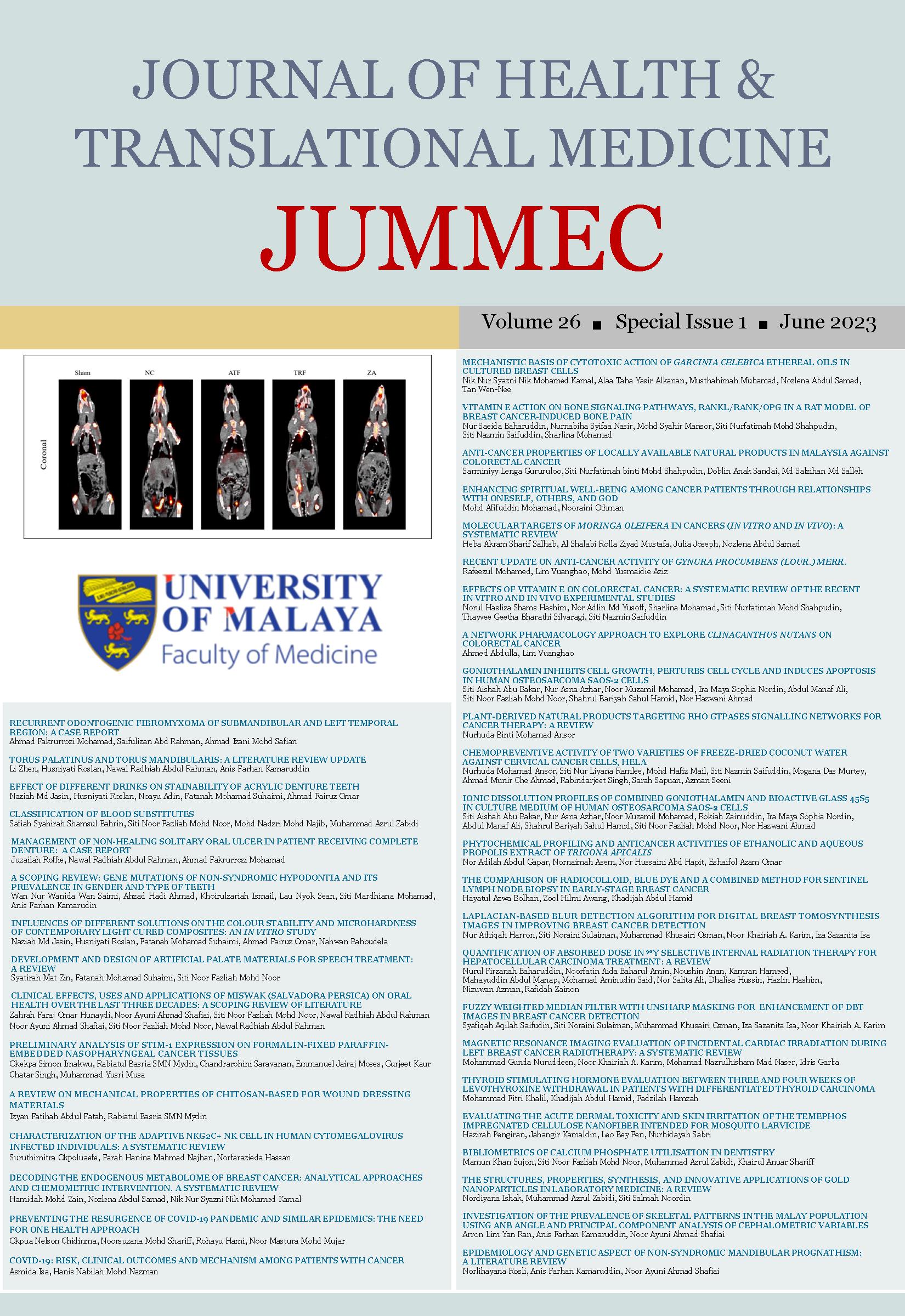EPIDEMIOLOGY AND GENETIC ASPECT OF NON-SYNDROMIC MANDIBULAR PROGNATHISM: A LITERATURE REVIEW
Received 2023-01-04; Accepted 2023-04-15; Published 2023-06-06
DOI:
https://doi.org/10.22452/jummec.sp2023no1.24Abstract
Mandibular prognathism is a Class III skeletal base manifestation in which the lower jaw overgrows with or without
the upper jaw undergrowing, causing the lower jaw to appear more prominent than the latter. This manifestation
results in an unattractive facial profile, misaligned bite, and hampered speech. Several reports suggested that the
prevalence rate of mandibular prognathism varies depending on the demographic, and its primary aetiology is
genetics. This literature review summarises the prevalence rate of mandibular prognathism in various populations, its inheritance pattern in different pedigree groups, and the loci and candidate genes involved in non-syndromic
mandibular prognathism. Most studies show no relationship between gender and phenotypic prevalence, with
Caucasians having the lowest prevalence of mandibular prognathism and East Asians having the greatest. The inheritance pattern of mandibular prognathism is diverse, with the most typical inheritance pattern being the dominant trait with incomplete penetrance. Genetic findings from many documented reports suggest that there may be more than a single gene that causes mandibular prognathism. Through genome-wide linkage analyses, several possible chromosomal loci and various candidate genes have been discovered, particularly in patients from the Chinese (FGF12, ADAMTS1, TGFB3, LTBP2, and COL2A1), Japanese (PLXNA2 and SSX2IP), and Korean (Matrilin-1) populations. It was discovered that the majority of the locus variations and candidate genes were expressed during the development of the mandible, which may cause mandibular prognathism.
Downloads
Downloads
Published
Issue
Section
License
All authors agree that the article, if editorially accepted for publication, shall be licensed under the Creative Commons Attribution License 4.0 to allow others to freely access, copy and use research provided the author is correctly attributed, unless otherwise stated. All articles are available online without charge or other barriers to access. However, anyone wishing to reproduce large quantities of an article (250+) should inform the publisher. Any opinion expressed in the articles are those of the authors and do not reflect that of the University of Malaya, 50603 Kuala Lumpur, Malaysia.


